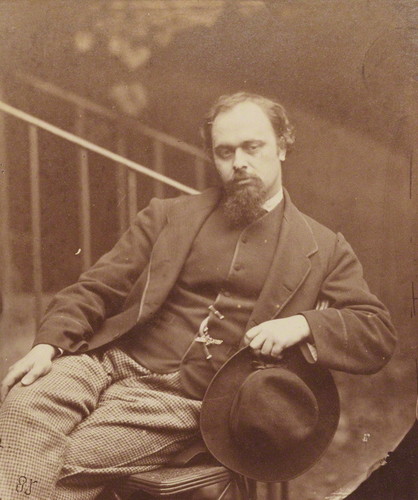The Context of Victorian Song
"five or ten minutes’ brilliant trifling"
When Dante Gabriel Rossetti first heard about the prospect of Emanuel Aguilar’s musical setting of "Goblin Market," his initial reaction was to express doubt about the effectiveness and seriousness of the anticipated composition and to question the composer’s ability to command the kind of performance and audience that this major poem would deserve. Dante Gabriel records his reaction in a 29 November 1879 letter to his mother: “I was glad to hear of some venturous mortal having set Goblin Market to music, though I cannot exactly see the aim and end of the act unless he has a public performance in view and at command. It would hardly do for a five or ten minutes’ brilliant trifling at the evening piano” (Correspondence of Dante Gabriel Rossetti, letter no. 2143).
parlour song and art song
Dante Gabriel seems to voice here his conviction that a significant poem such as “Goblin Market” would demand a more sophisticated and ambitious musical setting than the sort that would be typical of the Victorian parlour songs or drawing-room ballads that enjoyed enormous popularity and sales in this period—which are dismissed by Dante Gabriel here as “a five or ten minutes’ brilliant trifling at the evening piano.” Dante Gabriel may also be acknowledging an important division in the nineteenth-century song repertory: in addition to the very large category of popular, recreational song for a mass middle-class market (the drawing-room ballads or parlour songs performed by amateur musicians and in a domestic setting), there was also a smaller category of more serious song or art song, to be performed by trained musicians as concert repertoire and appreciated by connoisseurs. Dante Gabriel suggests “Goblin Market” would only be suitable to the latter category of serious composition—hence, Dante Gabriel “cannot exactly see the aim and end” of Aguilar’s composition “unless he has a public performance in view and at command.”
Goblin Market: Cantata for school children
Dante Gabriel's misgivings were somewhat misplaced: Aguilar's cantata is more ambitious than the typical parlor ballads of the period and instead falls into the category of sophisticated musical composition; furthermore, Aguilar did have the reputation and connections that made it possible on a number of occasions to enlist performers, secure venues, and present public performances. However, Goblin Market: Cantata also presents Rossetti’s poem quite narrowly as a cautionary moral tale for the young, and toward the end of the 19th century this altered emphasis and its re-orientation of "Goblin Market" for a younger intended market becomes explicit in the publishing history with the republication Goblin Market: Cantata in a series of "Cantatas for schools and classes" (Ives, p. 265). The cantata was frequently presented as an amateur school production, perhaps an example of the kind of artistic simplification that Dante Gabriel warned of. Nevertheless, this emergence of “Goblin Market” as a children’s text is a significant evolution in the history of the poem, as Lorraine Janzen Kooistra has persuasively demonstrated in Christina Rossetti and Illustration. Kooistra marks this transition to the juvenile book market as taking place at the end of the 19th century based the emergence at that time of illustrated editions of “Goblin Market” that present Rossetti’s text as juvenile literature (p. 195). However, given his 1880 composition of Goblin Market: Cantata, Aguilar is indeed a previously overlooked and ground-breaking collaborator from another art form in this repositioning of “Goblin Market” for a younger market.
Sources:
Ives, Maura. Christina Rossetti: A Descriptive Bibliography. New Castle, DE, Oak Knoll, 2011.
Kooistra, Lorraine Janzen. Christina Rossetti and Illustration. Athens OH, Ohio UP, 2002.
Rossetti, Dante Gabriel. The Correspondence of Dante Gabriel Rossetti. Edited by William E. Fredeman. Cambridge UK, Rochester NY, D.S. Brewer, 2002-15. 10 vols.


